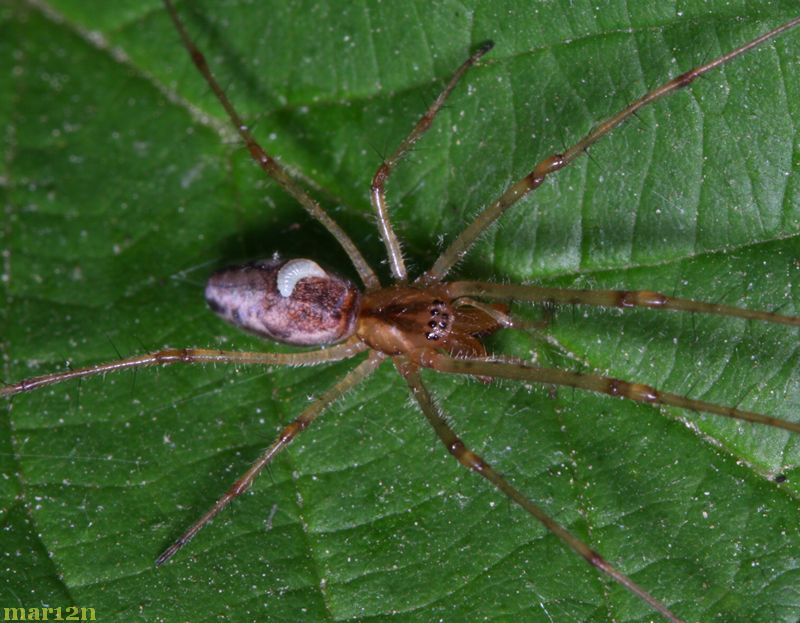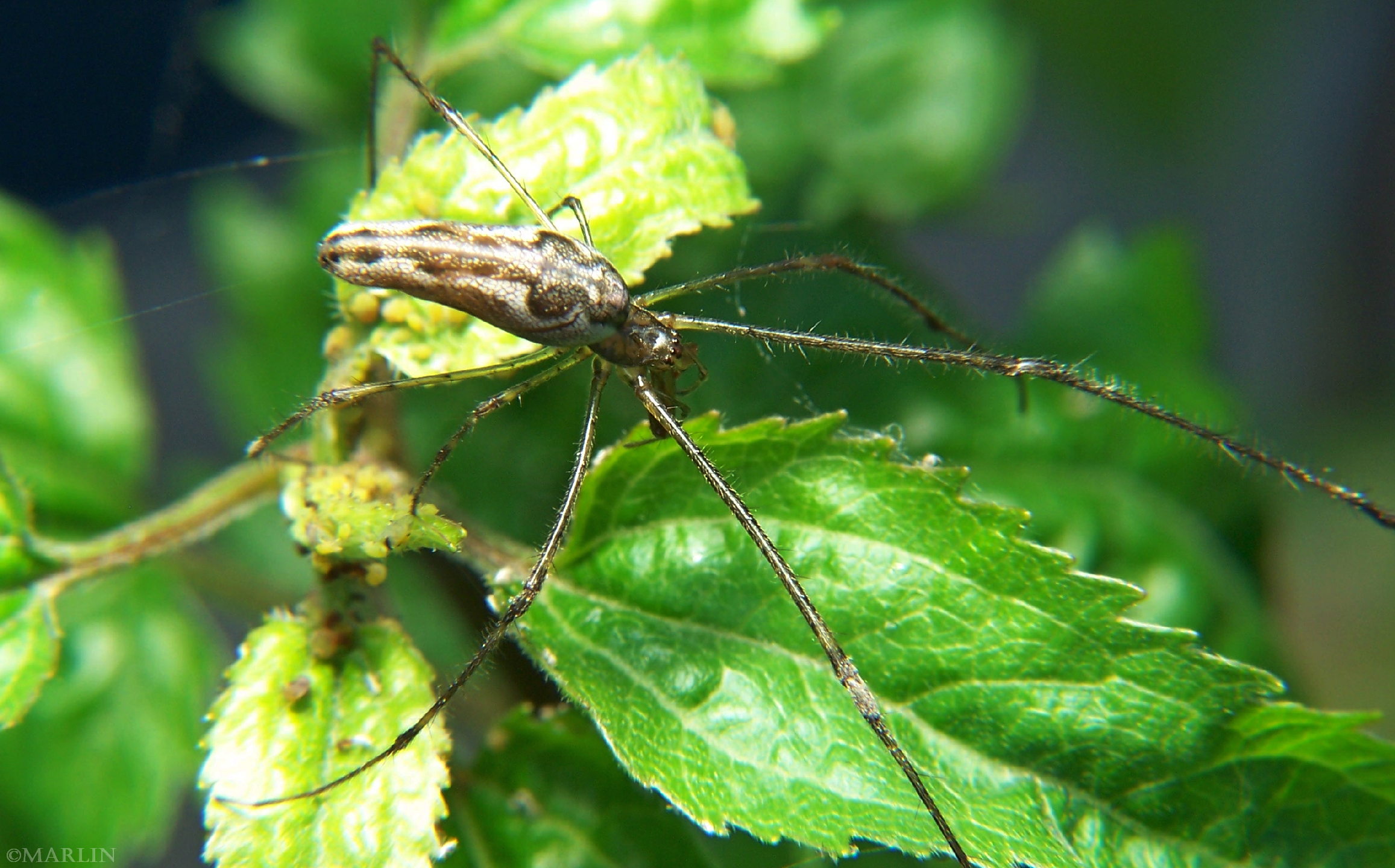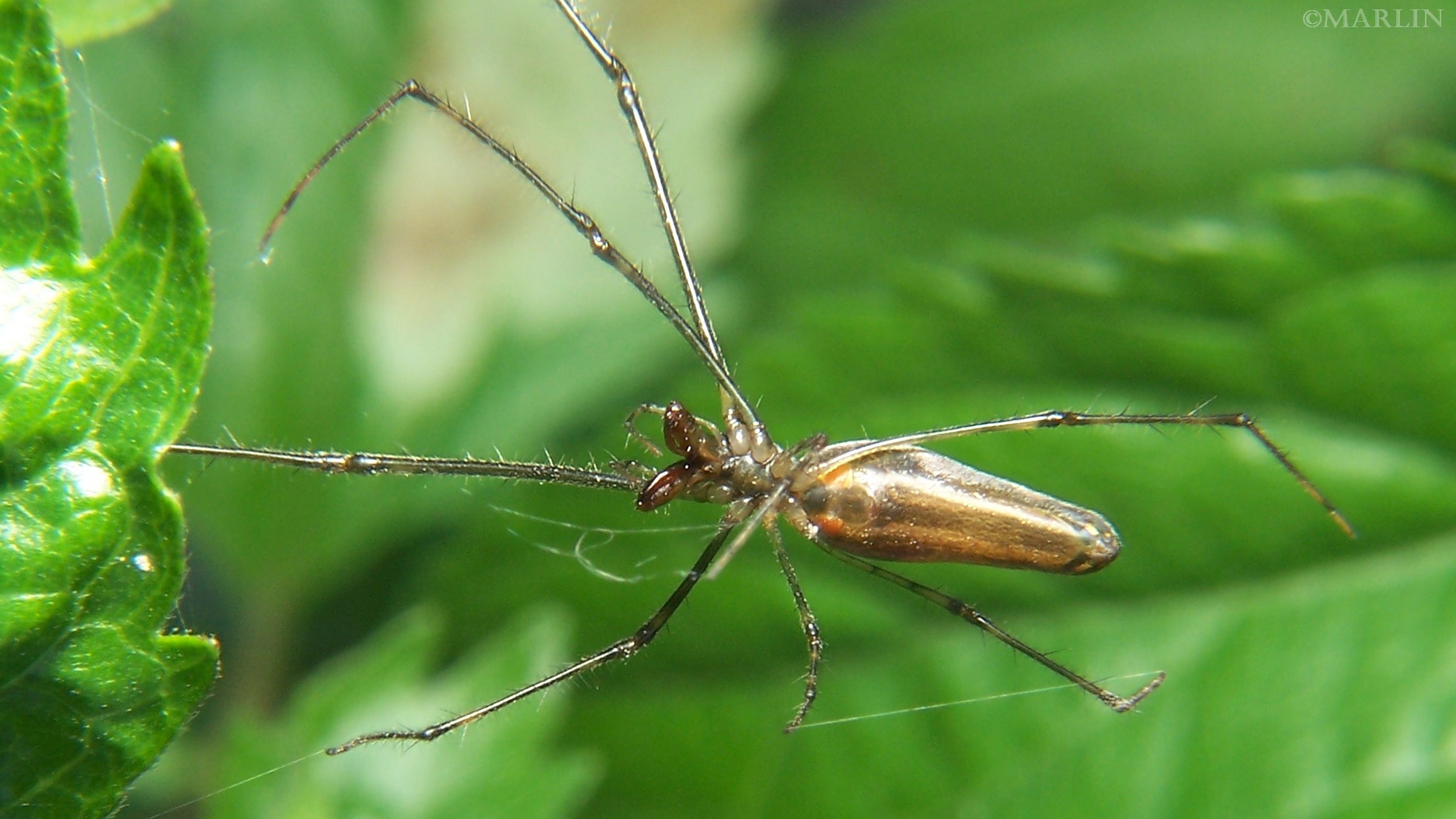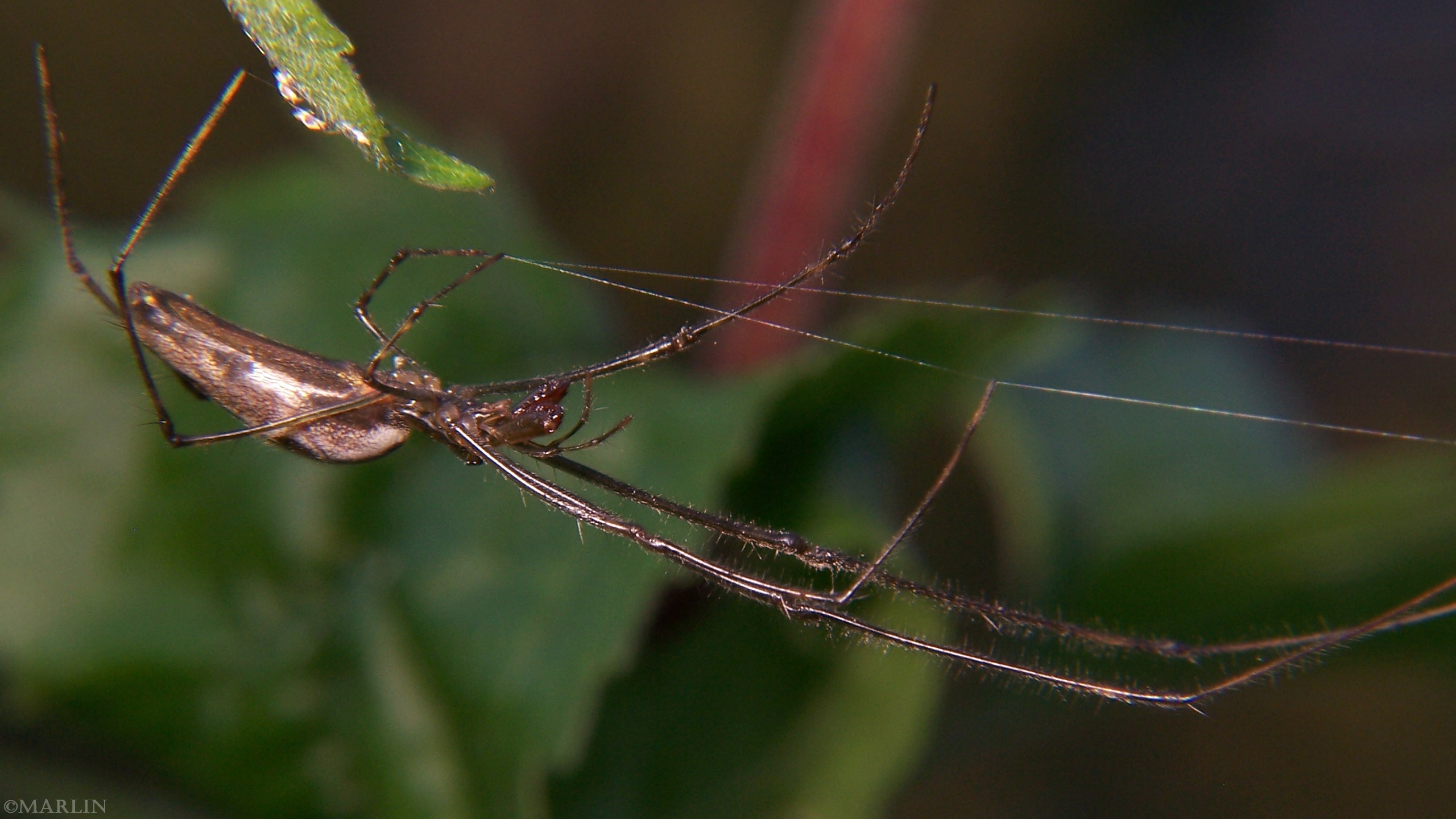Long-Jawed Orb Weaver Spider – Tetragnatha elongata
Larger spiders in this family (of which this is one) are often found near water, especially moving water of rivers and streams. They build orb webs in the horizontal plane, often just inches above the surface of water where they can catch emerging insects like midges, mayflies, and stoneflies. Smaller species build webs in fields and meadows, often in trees and shrubs. [1]
I found many of these huge spiders at the edge of the west branch of the DuPage River at Warrenville, Illinois. They had long “lifeline” of silken threads strung about in low foliage all along the edge of the water. They were using these webs as quick avenues between plants, and they moved quickly and easily great distances, seemingly through thin air.
Tetragnathid spiders are usually easy to identify by their eponymous huge, powerful chelicerae (jaws) and long, slender abdomen. Like the other family of orb weavers, the Araneidae, these spiders have eight eyes and 3 claws on each tarsus. There are about 25 species in North America [1].
The Venusta Orchard spider, a very common woodland arachnid, is a member of this family. The Venusta (after Venus, the goddess of beauty) spider is nearly ubiquitous in the forest understory here in northern Illinois where they sit upside down in their smallish (6-8 inches or so) horizontal orb webs. Their chelicerae are not nearly so prominent as other spiders in this family.
 With ectoparasitic larvae
With ectoparasitic larvae
References
- Bugguide.net, Family Tetragnathidae – Longjawed Orb Weavers
- Bugguide.net, “Tetragnatha elongata“
Spiders Main | Spiders Index | Orb Weavers | Jumping Spiders | Nursery Web
Tree Encyclopedia / North American Insects & Spiders is dedicated to providing family-friendly educational
resources for our friends around the world through large images and macro photographs of flora and fauna.




